Selected Publications
Some publications can be downloaded from journal site for free. I may not reply any request for pdf version of these publications. You may have an access through your institution's network.
Filter by type:
Sort by year:
Transmission mechanisms of financial stress into economic activity in Turkey
Journal PaperJournal of Policy Modeling, Volume 41, Issue 2, March–April 2019, Pages 395-415, https://doi.org/10.1016/j.jpolmod.2019.02.010
Abstract
Measuring, analyzing and understanding systemic risk in financial system have become very important in the light of the recent global crisis. In this study, we follow Holló, Kremer, and Lo Duca (2012) and evaluate systemic stress of financial system of Turkey with a high frequency (daily) financial stress index which consists of daily 13 financial market indicators. Dynamics of the financial stress index indicate that the index creates proper signals to the well-known financial stress events. The dynamic interaction between financial stress and real economic activity is investigated with application of structural VAR (SVAR) model. Results of the study suggest that deterioration of financial conditions impacts real economic activity significantly and adversely.
A new causal discovery heuristic
Journal Paper Annals of Mathematics and Artificial Intelligence, 2018, https://doi.org/10.1007/s10472-018-9575-0
Abstract
Probabilistic methods for causal discovery are based on the detection of patterns of correlation between variables. They are based on statistical theory and have revolutionised the study of causality. However, when correlation itself is unreliable, so are probabilistic methods: unusual data can lead to spurious causal links, while nonmonotonic functional relationships between variables can prevent the detection of causal links. We describe a new heuristic method for inferring causality between two continuous variables, based on randomness and unimodality tests and making few assumptions about the data. We evaluate the method against probabilistic and additive noise algorithms on real and artificial datasets, and show that it performs competitively.
Bulanık Sistemlerde Son İlerlemeler, Tam Tip 2 Bulanıklığı
Journal Paper Yeni Türkiye Bilim ve Teknoloji Özel Sayısı. 90, 641-657
Abstract
Time-varying nature and macroeconomic determinants of exchange rate pass-through
Journal Paper International Review of Economics & Finance, 38, 56–66, 2015
Abstract
The objectives of this study are two-fold: i) to derive time-varying exchange rate pass-through (ERPT) degree and ii) investigate the macroeconomic determinants of the degree of ERPT. For this purpose, the study adopts a distinct methodology combining Dynamic Conditional Correlation-Generalized Autoregressive Conditional Heteroskedasticity (DCC-GARCH) and panel threshold regression analyses. The data from a large sample of countries are used and time-varying ERPT measure is obtained with an application of DCC-GARCH to each country in the sample. Then the macroeconomic determinants of ERPT are examined by making use of both cross country and time variations in a panel regression model. The time varying structure of ERPT clearly shows that the ERPT degree has been low over the last three decades and declining dramatically since mid-1990s. Further, ERPT responds positively to average inflation and inflation rate volatility while negatively to exchange rate volatility, the degree of openness and output gap.
An empirical analysis of currency volatilities during the recent global financial crisis
Journal Paper Economic Modelling, 43, 394–406, 2014
Abstract
This paper investigates the impact of the 2008–2009 global financial crisis on the co-movement of 16 currencies in the sample. It employs a two-step atheoretic empirical methodology; it i) applies change point estimation based on geometric Brownian motion to detect change points in volatilities and ii) applies Engle's (2002) dynamic conditional correlation (DCCR) approach to estimate time varying correlations and then, observes the behavior of volatility co-movements during the periods found in (i). The results show that volatilities increase at least twofold with the outbreak of the crisis and there is an inverse relationship between volatility and the duration of the crisis. The DCCRs usually increase with the onset of the crisis and they fluctuate smoothly afterwards while keeping that increased level.
Determinants of international transmission of business cycles to Turkish economy
Journal Paper Economic Modelling, 36, 383-390, 2014
Abstract
This study aims to investigate the channels through which international business cycles are transmitted to Turkish economy. Our analysis follows two steps: i) business cycle transmission is measured using Longest Common Subsequence (LCS) method, a pattern recognition algorithm that accounts for the nonlinear and time-varying nature of business cycles and ii) the potential mechanisms of propagation of international business cycles are examined by specifying a panel regression model in which the LCS measure of synchronization is used as the dependent variable. Applying several panel estimation methods to the bilateral data from 22 countries over the 1998–2009 periods, we find that both trade and financial similarities are significant in the transmission of business cycles to Turkish economy. Especially, the results highlight the role of trade integration indicating that Turkish business cycles are closely linked with the business cycles of the members of European Custom Union.
MiniMax ε-stable cluster validity index for Type-2 fuzziness
Journal Paper Information Sciences, 184, 64-74, 2012
Abstract
In this paper, we concentrate on the usage of uncertainty associated with the level of fuzziness in determination of the number of clusters in FCM for any data set. We propose a MiniMax ε-stable cluster validity index based on the uncertainty associated with the level of fuzziness within the framework of interval valued Type 2 fuzziness. If the data have a clustered structure, the optimum number of clusters may be assumed to have minimum uncertainty under upper and lower levels of fuzziness. Upper and lower values of the level of fuzziness for Fuzzy C-Mean (FCM) clustering methodology have been found as m = 2.6 and 1.4, respectively, in our previous studies. Our investigation shows that the stability of cluster centers with respect to the level of fuzziness is sufficient for the determination of the number of clusters.
International transmission of business cycles to Turkey
Journal Paper Iktisat Isletme ve Finans, 27(320), 9-34, 2012
Abstract
This study aims to identify the business cycles of countries that show strong interdependencies with Turkish business cycle in terms of the degrees of their co-movements and transmissions, employing Longest Common Subsequence (LCS). Using a sample of 32 countries, business cycle components are derived from industrial production indices of each country with an application of HP filtering; LCS is performed in order to obtain the degrees of business cycle synchronization and transmission and the countries are clustered to find out the extent to which group of country business cycles are synchronized with and transmitted to Turkish business cycle. The results indicate that the business cycles of the US, Japan, UK, Canada and South Korea are strongly transmitted to Turkish business cycle. In addition, it is found that Turkish business cycle is highly synchronized with central European countries except for Greece, Portugal, Czech Republic, Slovakia and Ireland.
An Empirical Investigation on the Determinants of the Saving-Investment Interaction
Journal Paper Panoeconomicus, 58(3), pp:343-353, 2011
Abstract
This study aims to shed light on the Feldstein-Horioka (F-H) puzzle, making use of the potential explanations put forward in the related literature. To this end, the study takes a distinct empirical route, combining a cointegration technique and regression analysis. In the first step, we obtain three definitions for the dependent variable that represent the degree of the interaction between domestic saving and investment (S-I), employing a cointegration analysis for 86 countries in the sample. In the second step, each definition of the dependent variable is regressed on potential explanations for the co-movement of the S-I such as openness, country size, productivity shocks, and real interest rate differentials. After examining a number of potential variables for their explanatory power on this puzzle, however, none of the posited variables are found to be statistically significant determinants of the S-I interaction. The results indicate that the size of the economy, productivity shocks or interest rate differentials have almost no role in explaining the S-I behavior. Further, the findings show that openness has no influence on the S-I interaction, suggesting that it is not plausible to view the S-I correlation as an indicator of international capital mobility as F-H did.
What Do Productivity Shcoks Tell Us on the Saving-Investment Relationship
Journal Paper Prague Economic Papers, 18, Issue 3, 195-208, 2009
Abstract
This study is a contribution to the empirical literature on the significance of productivity shocks in explaining a high saving-investment correlation, using data from a panel of 21 OECD countries over the period 1970-2003. The study looks at the distributional properties of the productivity shocks in order to test if productivity shocks can relate saving to investment. To this end, we divide the countries into three groups with respect to the distributional characteristics of productivity shocks in each country with an application of the Fuzzy-c-means (FCM) clustering technique. The results provide some support for the productivity shock argument, indicating that the saving retention coefficients are greater for the countries subject to large productivity shocks in magnitude.
A Fuzzy Analysis of Country Size Argument For the Feldstein-Horioka Puzzle
Journal Paper Information Sciences, 179, Issue 16, 2754-2761, 2009
Abstract
This study aims to analyze the effect of country size, represented by relative Gross National Products (GNP), on the association between domestic investment and saving, using data from a panel of 21 OECD countries. The countries are clustered into four groups with respect to their relative country sizes with an application of Fuzzy c-Means clustering technique. The novelty of this approach is that it is an unsupervised method that generates membership values between zero and one instead of binary values that take values of zero or one only. In addition to this it has the advantages of its tolerance to imprecise data and the ease of understanding. The results show that the saving retention coefficients are greater for larger countries except for the cluster which contains the largest country. Thus, this work presents only partial evidence that the country size affects the relationship of domestic saving and investment.
An Empirical Assessment of the Optimum Currency Areas Theory: Turkey and the Emu Countries
Journal Paper I Fuzzy Economic Review, Vol XIII, No. 1, pp:3-18, 2008
Abstract
This study aims to analyze Turkey and the EMU countries in the light of criteria suggested by the optimum currency areas (OCA) theory and the Maastricht criteria. To this end, we follow a novel approach with an application of fuzzy c-means (FCM) clustering. The results show that the application of FCM clustering to the OCA criteria produces better clustering structure compared to the Maastricht criteria. In addition, in the analysis with the Maastricht criteria, the control group countries, Canada and Japan, are not distinguished from the European countries. Furthermore, Turkey remains as a separate group than the European countries with respect to both the OCA criteria and the Maastricht criteria.
Practical Insights from OCA Variable Combinations
Journal PaperEconomic Annals, Year LIII, No. 176, 38-61, 2008
Abstract
This study aims to identify optimum currency areas (OCA) variables that distinguish certain Economic and Monetary Union (EMU) member countries from the other EMU members. In the previous studies, EMU members were identified in the light of criteria suggested by the OCA theory. In this study, in order to obtain additional insights, we analysed OCA variables and the performance of European countries with respect to these variables. Our analysis shows that some of the EMU member countries are dissimilar to the rest of the EMU members with respect to certain OCA criteria.
A Currency Crisis and Its Perception With Fuzzy C-means
Journal Paper Information Sciences, 178, Issue 8, 1923-1934, 2008
Abstract
In this paper, we attempt to analyze currency crises within the decision theory framework. In this regard, we employ fuzzy system modeling with fuzzy C-means (FCM) clustering to develop perception based decision matrix. We try to build a prescriptive model in order to determine the best approximate reasoning schemas. We use the underlying behavior of the market participants during the crisis. With this analysis, we form the dictionary catalogs to construct a perception based payoff matrix. As an illustrative example, we used data from Turkish economy that covers two currency crises. The results show that market participants’ dictionary catalogs based on perception knowledge extracted from the first crisis help participants to perceive the rise in market uncertainty. When the expectations are revised accordingly a speculative attack becomes inevitable.
Upper and lower values for the level of fuzziness in FCM
Journal Paper Information Sciences, 177(23), 5143-5152, 2007
Abstract
The level of fuzziness is a parameter in fuzzy system modeling which is a source of uncertainty. In order to explore the effect of this uncertainty, one needs to investigate and identify effective upper and lower boundaries of the level of fuzziness. For this purpose, Fuzzy c-means (FCM) clustering methodology is investigated to determine the effective upper and lower boundaries of the level of fuzziness in order to capture the uncertainty generated by this parameter. In this regard, we propose to expand the membership function around important information points of FCM. These important information points are, cluster centers and the mass center. At these points, it is known that, the level of fuzziness has no effect on the membership values. In this way, we identify the counter-intuitive behavior of membership function near these particular information points. It will be shown that the upper and lower values of the level of fuzziness can be identified. Hence the uncertainty generated by this parameter can be encapsulated.
Optimum Currency Areas Theory: An Empirical Application to Turkey
Journal Paper South East European Journal of Economics and Business, Vol. 2, No. 2, 75-88, 2007
Abstract
This study aims to assess Turkey's position relative to European countries with respect to the optimum currency areas (OCA) criteria, taking Germany as the center country and employing Mahalanobis distance as a similarity measure. To this end, we followed a novel approach in the application of Hodrick-Prescott and Baxter-King filters to the industrial production series and the real interest rates under three cases. We then computed OCA similarity indices, calculated countries' similarities with respect to Germany and their nearest neighbors, and compared the results. Our results show that Turkey is the second furthest neighbor country to Germany after Croatia in the first two cases. However, Turkey is the third furthest country to Germany after Norway and Romania in the third case.
Optimum filtering for optimum currency areas criteria
Journal Paper Economics Bulletin, Vol. 6, No. 44, 1-18, 2007
Abstract
This study aims to analyze Turkey and the Economic and Monetary Union (EMU) countries in the light of criteria suggested by the optimum currency areas (OCA) theory and to compare the criteria obtained by an application of Hodrick-Prescott (H-P) and Baxter-King (B-K) filters. To this end, we follow a novel technique, fuzzy c-means (FCM) clustering with upper and lower levels of fuzziness. The results show that the application of the H-P filtering technique with appropriate smoothing parameter values produces sensible clusters.
Country-size Argument as a Potential Explanation for the Feldstein-Horioka Puzzle
Journal Paper The Empirical Economics Letters, 6(6) pp:501-507, 2007
Identifiying the Turning Points in Turkish Business Cycles
Journal Paper Akdeniz Univ., İktisadi ve İdari Bilimler Fakültesi Dergisi, Akdeniz İİBF Dergisi, Cilt 7, Sayı 14, 1-19, 2007
Abstract
The objective of this study is to identify the turning points in the Turkish economy in an effort to analyze the main characteristics of the Turkish business cycles. To this end, the classical and deviation cycles are extracted by using the filters developed by Hodrick and Prescott (1997, HP) and Baxter and King (1999) respectively. An optimal smoothing parameter for the HP filter is estimated. Bry and Boschan (1971) procedure is applied to identify the turning points. Accordingly, there are three complete classical cycles ranging between two and six years. The deviation cycles exhibit a symmetrical pattern contrary to the classical cycles. Overall, the results show that the Turkish business cycles share similar characteristics with developing economies.
Currency Crises Analyzed by Type-I Fuzzy Logic System
Journal Paper Fuzzy Economic Review, Vol IX, No. 1, 35-59, 2004
Abstract
Currency crises in developing countries have been an attracting point for economists for the last couple of decades. Different analyses and me-thods have been employed to capture the timing and the effects of crises on foreign exchange markets. In this paper, we propose a new approach to the analysis. This approach comprises: a) Basic exploratory analysis of macro-economic time series data, b) Rule Ba-sed Fuzzy System Modelling (RBFSM) to capture the underlying behavior of selected macroeconomic variables. The predictive power of this methodology is tested on the Turkish data. Exploratory data analysis includes some statistical measures, Fourier analysis and Long Range Memory analysis of selected (available) macroeconomic time series data. After determining variables that deem to be important for large currency swings, data are split into two groups for training and validation of the model. Training data is clustered by Fuzzy System Modeling, FSM, schema which first applies Fuzzy C-Means (FCM) clustering algorithm to input and output space with several levels of fuzziness, m, and number of cluster, c, pairs. Amongst all m and c pairs the one that gives minimum root mean square error (RMSE) is selected. For the inference local OLS type Regression is used. This modelling can also be classified as a fuzzy data mining that uses a basic Fuzzy Rule Based System Modelling structure. FSM results are compared with GARCH/ARMAX and ANFIS model predictions.
Uncertainty Around Currency Crisis: Type-2 Fuzzy System Modelling
Journal Paper Hacettepe Universitesi İktisadi ve İdari Bilimler Fakültesi Dergisi, Cilt 20, Sayı 2, 27-41, 2002
Abstract
Different analyses and methods have been employed to capture the timing and the effects of crises on foreign exchange markets. Fuzzy System Modelling (FSM) has been applied and successfully captures the crisis. In this paper, we further explore the uncertainty in the results of FSM findings. In this approach it is assumed that the only uncertainty resource is the level of fuzziness. Once optimum number of clusters and level of fuzziness are obtained by RMSE supervision, uncertainty component of level of fuzziness is analyzed. Results and reflection of this kind of uncertainty are shown.
Recent Advancement in Fuzzy System: Full Type 2 Fuzziness. In: Research Methods: Concepts, Methodologies, Tools, and Applications
Book Chapter IGI Global, Hershey, PA
| 2015 | ISBN13:978-14-666-7456-1, DOI:10.4018/978-1-4666-7456-1.ch020

Chaos and Complexity Theory in World Politics, (Eds.: S. Erçetin, & S. Banerjee)
Decision under uncertainty is an active interdisciplinary research field. A decision process is generally identified as the action of choosing an alternative that best suites our needs. This process generally includes several areas of research including but not limited to Economics, Psychology, Philosophy, Mathematics, Statistics, etc. In this chapter the authors attempt to create a framework for uncertainties which surrounds the environment where human decision making takes place. For this purpose, the authors discuss how one ought to handle uncertainties within Fuzzy Logic. Furthermore, they present recent advances in Type 2 fuzzy system studies.
Recent Advancement in Fuzzy System: Full Type 2 Fuzziness. In: Chaos and Complexity Theory in World Politics
Book Chapter IGI Global, Hershey, PA
| 2014 | ISBN13:978-14-666-6070-0, DOI:10.4018/978-1-4666-6070-0.ch010

Chaos and Complexity Theory in World Politics, (Eds.: S. Erçetin, & S. Banerjee)
Decision under uncertainty is an active interdisciplinary research field. A decision process is generally identified as the action of choosing an alternative that best suites our needs. This process generally includes several areas of research including but not limited to Economics, Psychology, Philosophy, Mathematics, Statistics, etc. In this chapter the authors attempt to create a framework for uncertainties which surrounds the environment where human decision making takes place. For this purpose, the authors discuss how one ought to handle uncertainties within Fuzzy Logic. Furthermore, they present recent advances in Type 2 fuzzy system studies.
Uncertainty and Fuzzy Decisions
Book Chapter Springer Netherlands
| 2014 | ISBN: 978-94-017-8690-4
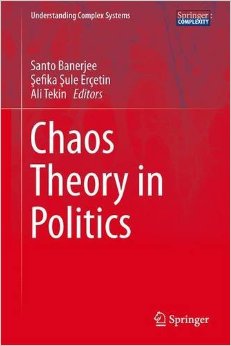
Chaos Theory in Politic Understanding Complex Systems
Uncertainty is the main reason that makes human free to choose. Many actions, strategies are designed to handle or reduce the uncertainty to make decision makers life easier. But there is no common accepted theory in the academia. Researchers still struggling to create a common understanding. There are theories that we may follow to make decisions under uncertainty. Among them, probability theory, fuzzy theory and evidence theory can be given. Decision problem is constructed in with the help of these theories. Fuzzy Logic and Fuzzy theory may be considered as the recent advancement and has been applied in many fields for different type of decision problems.
Uncertainty, Complexity and Fuzzy Logic
Book Chapter Springer Netherlands | 2014 | ISBN: 978-94-007-7361-5
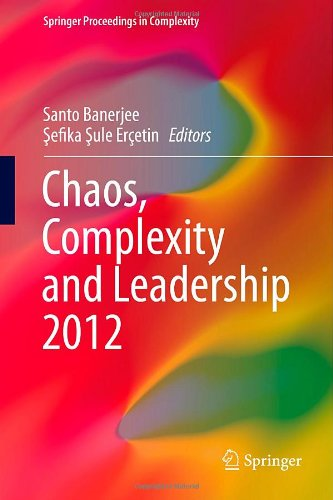
Springer Proceedings in Complexity
We explore the concept of uncertainty, complexity and fuzzy logic in order to provide a grounding of the use of fuzzy logic in human perception and decision making with precisiated natural language expressions. For this purpose, we provide generally accepted notions of uncertainty, its taxonomies, its sources and the need of fuzzy theory that provides a grounding for the handling of uncertainty. Finally a brief introduction is given to fuzzy decision making studies. In particular, we outline perception based decision making with an application of essential concept of fuzzy logic. For this purpose we restated essential concepts related to theoretical inquiry along with its interpretations in classical and fuzzy theories.
On The Co-Movements Of Exchange Rates
Book Chapter Asers Publishing Craiova, Romania | 2013 | ISBN: 978-606-93129-5-7
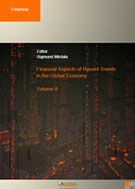
Financial Aspects of Recent Trends in the Global Economy Volume II
The aims of this study are to assess exchange rate co-movements by grouping the currencies based on similarities in their patterns, and to emphasize the importance of the trajectories of exchange rate co-movements in the exchange rate classification. Hierarchical clustering is performed with some widely used similarity measures along with the longest common subsequence (LCS) algorithm. Weekly series of twentyone currencies were used in this study. The results show that; i) LCS performs better than the other measures and it produces comprehensible results, ii) historical and geographical factors play an important role in the co-movement of currencies. Co-movements (common trajectories) of currencies need to be taken into consideration in studies on exchange rate behavior; since these trajectories usually contain most of the information. This chapter has important implications for the analyses in the research areas of exchange rate regime choice, monetary policy implementation, and the optimum currency areas (OCA) theory.
A Review of Cluster Validation with an Example of Type-2 Fuzzy Application in R.
Book Chapter Springer New York | 2013 | ISBN: 978-606-93129-5-7
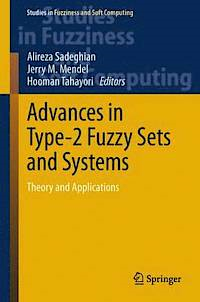
In Advances in Type-2 Fuzzy Sets and Systems
Interval valued type-2 fuzziness can be represented by means of membership functions obtained with upper and lower values of the level of fuzziness. These upper and lower values for the level of fuzziness in FCM algorithm were obtained in our previous studies. A particular application of Interval valued type-2 fuzziness is shown for cluster validity analysis in this chapter. For this purpose, we introduce a brief taxonomy for cluster validity indices to clarify the contribution of our novel approach. To provide reproducibility of our technique, the source code is written in freely available language ‘R’ and can be found on our web site.
Upper and Lower Values for the Level of Fuzziness in FCM
Book Chapter Springer Berlin Heidelberg | 2007 | ISBN: 978-3-540-71257-2
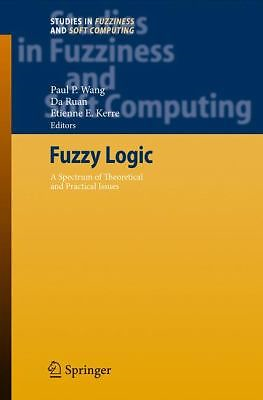
Studies in Fuzziness and Soft Computing Volume 215
The level of fuzziness is a parameter in fuzzy system modeling which is a source of uncertainty. In order to explore the effect of this uncertainty, one needs to investigate and identify effective upper and lower boundaries of the level of fuzziness. For this purpose, Fuzzy c-means (FCM) clustering methodology is investigated to determine the effective upper and lower boundaries of the level of fuzziness in order to capture the uncertainty generated by this parameter. In this regard, we propose to expand the membership function around important information points of FCM. These important information points are, cluster centers and the mass-center. At these points, it is known that, the level of fuzziness has no effect on the membership values. In this way, we identify the counter intuitive behaviour of membership function near these particular information points. It will be shown that the upper and lower values of the level of fuzziness can be identified. Hence the uncertainty generated by this parameter can be encapsulated.
MiniMax ε-stable cluster validity index for type-2 fuzziness
Conference Papers Fuzzy Information Processing Society (NAFIPS), 2010 Annual Meeting of the North American, Toronto, ON, 12-14 July 2010, pp:1-5, ISBN: 978-1-4244-7859-0
Abstract
Uncertainty is a central part of many data analysis methodologies. Although quantifying the uncertainty has long been discussed, the research on it is still in progress. The level of fuzziness in fuzzy system modeling is a source of uncertainty which can be classified as a parameter uncertainty. Upper and lower values of the level of fuzziness for Fuzzy C-Mean (FCM) clustering methodology have been found as 2.6 and 1.4 respectively in our previous studies. In this paper, we concentrate on the usage of uncertainty associated with the level of fuzziness in determination of the number of clusters in FCM in any data. We propose MiniMax ε-stable cluster validity index based on the uncertainty associated with the level of fuzziness within the framework of Interval Valued Type 2 fuzziness. If the data have a clustered structure, the optimum number of clusters may be assumed to have minimum uncertainty under upper and lower levels of fuzziness. Our investigation shows that the half range of upper and lower levels of fuzziness would be enough to determine the optimum number of clusters.
Entropy Assessment of Type-2 Fuzziness
Conference Papers Fuzzy Systems, 2004. Proceedings. 2004 IEEE International Conference on (Volume:2 ),25-29 July 2004, 1111 - 1115, ISBN: 0-7803-8353-2
Abstract
One of the sources of uncertainty, which perhaps is identified as parameter uncertainty, is the level of fuzziness in fuzzy system modeling. Given the optimum number of clusters and the cluster centers, one can explore type-2 membership values that capture the uncertainty of memberships. We explore variations of type-2 membership values with the entropy measure for an artificially created 12 data sets. Crisp to fuzzy data sets are constructed so that each data set has a different standard deviation within each cluster. In turn, each cluster has the same standard deviation for a given artificial data set. Members of a given artificial data set are generated randomly. Results are assessed by means of a particular entropy measure. It is shown that the content of the information uncertainty increases in certain ranges and decreases in other ranges of the level of fuzziness.